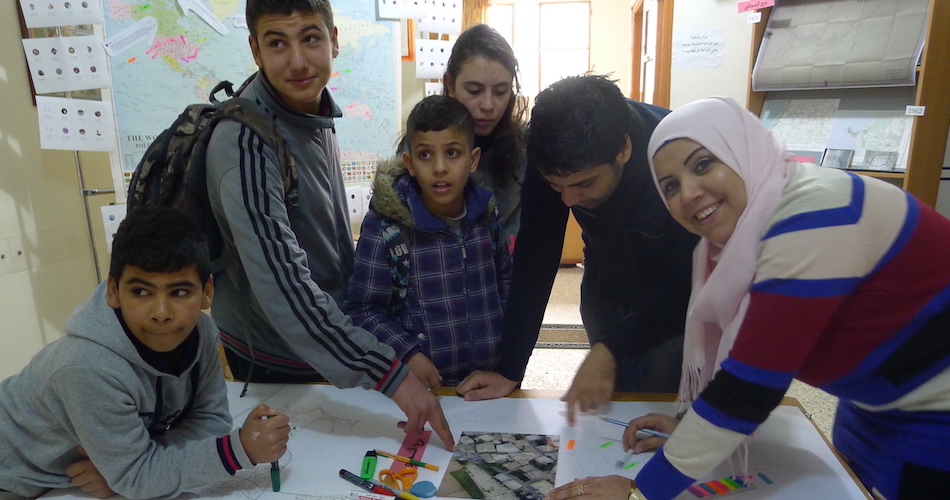Here is an article that Firas Ismail wrote for Public Lab about our exhibition and mapping workshop:

On 4 -5 February, an exhibition of our balloon mapping project took place in Al Hula Association in Bourj Al Shamali refugee camp. The exhibition was divided into several sections with different themes and information.

At the entrance, the exhibition had a small survey for visitors who came to see the exhibition. The survey asked questions that hoped to make participants reflect on the importance of a map for them and whether they had ever seen one of the camp.

After that, the exhibition showed the tools we used and how the process goes while of course displaying pictures of us in action and a sample of what a balloon trip looks like from the camera perspective.

 Then there was a section where we see the time line of the refugee camp and people were asked to detail key events that happened and that they consider important and part of our camp history.
Then there was a section where we see the time line of the refugee camp and people were asked to detail key events that happened and that they consider important and part of our camp history.

Next to this was a big map of the area where they would point to their favorite locations and the important sites such as associations, mosques, schools, falafel shops, phone shops.

As we wanted visitors to provide feedback on different issues, we also asked the people to write their suggestions about what the garden our project plans to build should be like.
 The exhibition then moves to a section that displays the evolution of maps of our area from 1946 till what we have today. It also compared a google earth map of the camp to a portion of our map with photos from the balloon to show the difference in quality and that ours is more updated since we can see more new buildings today that on google maps were you can see empty spaces.
The exhibition then moves to a section that displays the evolution of maps of our area from 1946 till what we have today. It also compared a google earth map of the camp to a portion of our map with photos from the balloon to show the difference in quality and that ours is more updated since we can see more new buildings today that on google maps were you can see empty spaces.

Finally we have a special corner to show where people who contributed to our kickstarter were from. An atlas marked all around the world their locations, and we thank them so much they really helped us make it happen. I hope they are reading this article too 😉
 After that is finished, there is a fun corner where there are real pictures of different places in the camp taken by the balloon and we asked people to try to guess where those places are.
After that is finished, there is a fun corner where there are real pictures of different places in the camp taken by the balloon and we asked people to try to guess where those places are.
During the exhibition we were able to note how curious people were about how our mapping works and they were amazed when the saw a portion of the result — especially the fact that something that is as simple as a camera hooked to a balloon gives such results was for many truly is amazing. For me, not only the level of their cooperation and desire to give their opinion and ideas was truly motivating, especially as we got a lot of feedback and information that will help us complete the map and future projects. Many visitors thanked us for our effort which was really pleasing and I consider the outcome of this exhibition as truly positive, as everyone was happy about the map and learning how to try to navigate whats where.
